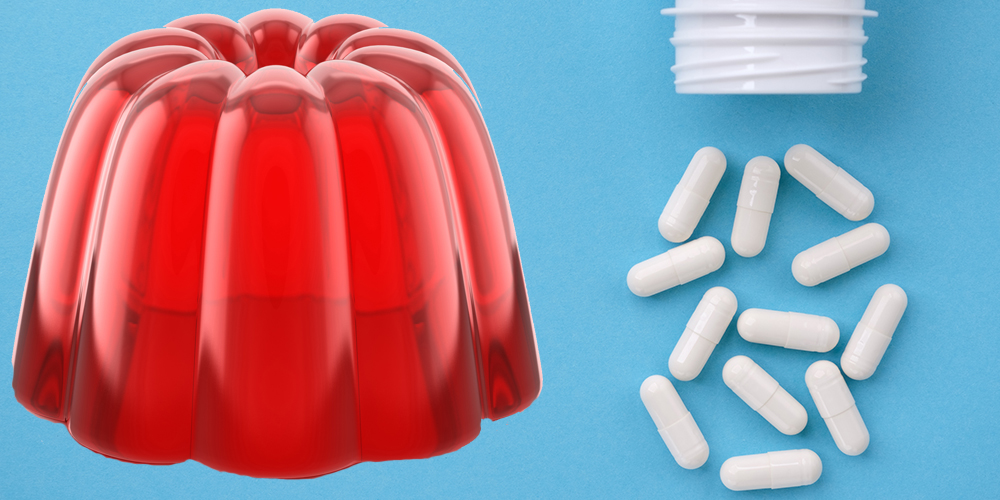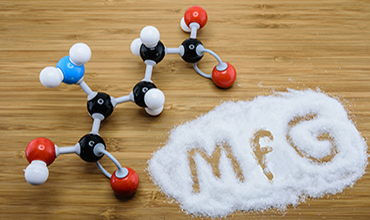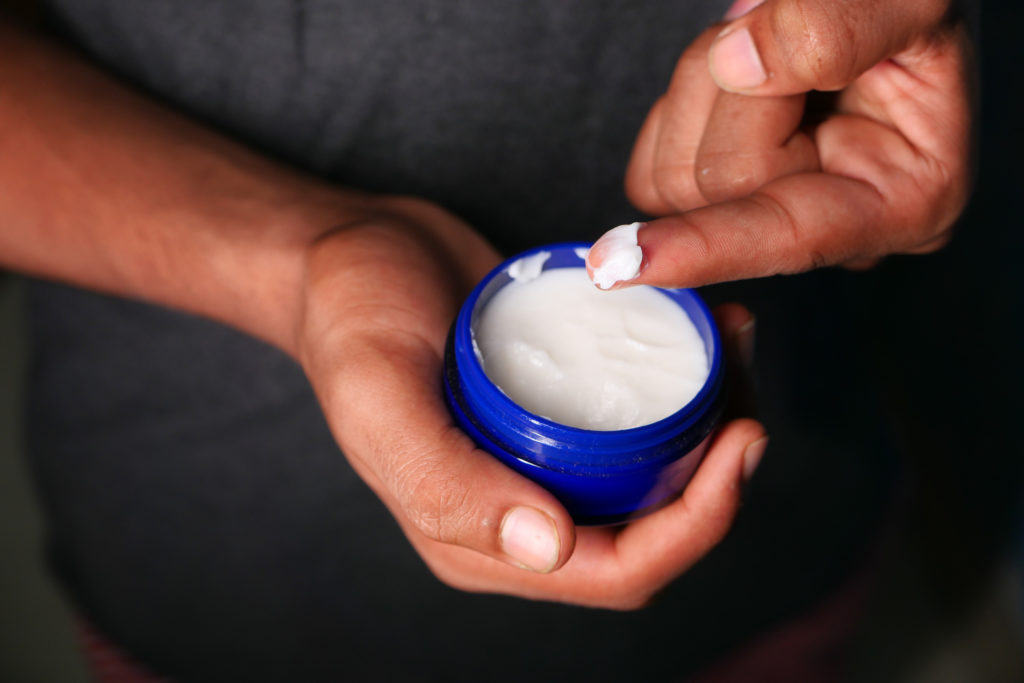On January 4, 2021 my Citizen Petition asking the FDA to strip MSG of its GRAS (generally recognized as safe) status was posted by the FDA. Some of the comments that followed were restatements of what had been written in the petition. Others were powerful stories of damage done by MSG, or statements from consumers supporting the petition and agreeing that MSG should not be considered safe by the FDA. Then on March 10 a lengthy comment from Ajinomoto’s The Glutamate Association arrived, made up of run-on sentences with disconnected thoughts and a slew of feel-good words related to MSG, all of which communicated nothing other than TGA rejects the claims made in the Citizen Petition, declaring that “MSG is safe.”
My first impression was that this was some sort of mistake. In the thirty plus years since then TGA chairman Richard Cristol told me that my husband Jack couldn’t possibly be sensitive to MSG, and sent me a book* “to prove it,” my experience has been that those whose job it is to keep repeating MSG is “safe” don’t respond to criticism, they simply ignore it.
They really don’t have to respond as they have “colleagues” in high places at the FDA, USDA, and NIH and no major media has dared even suggest that MSG might be harmful since the 1991 60 Minutes program on MSG. And since the 1995 FASEB report was published, with rare exception, no researcher in the United States has published an article even hinting at MSG-toxicity. Only in January when Food Navigator-USA published “Ajinomoto defends MSG as nonprofit petitions FDA to rescind its GRAS status,” did Ajinomoto’s Tia Rains fire back — with a classic piece of glutamate-industry propaganda.
For 50+ years the Glutes have pretty much ignored criticism from those who maintain that MSG is toxic. It would appear that they’ve used this strategy to keep questions of glutamate sensitivity out of the media – just letting any mention of harm done by MSG die a slow, quiet death. And this strategy, along with rigging the research they’ve presented to the world as evidence of MSG’s safety, has been incredibly effective for this excitotoxic, brain damaging food additive is still being advertised as generally recognized as safe (GRAS) by the FDA.
My second impression was that this was just another piece of glutamate industry propaganda dressed up as a comment, placed on a new stage with the array of feel-good words surrounding “MSG” and the standard lies we’ve learned to anticipate from their extensive distribution of propaganda. As I worked my way through the TGA comment trying to compose a response, I was struck by the sheer volume of complementary words describing MSG, used over and over and over again as is common in brainwashing.
Brainwashing is, after all, largely about language. Language is what nourishes the lies that claim toxic food is safe. Language is what feeds the MSG-is-safe lies about MSG and the excitotoxic – brain damaging — manufactured free glutamic acid in MSG. You can lie with pictures, but since MSG looks pretty much like salt and MSG is now being marketed as a salt-substitute as well as a flavor enhancer, using language has got to be more effective.
Just look at the words (below) used in TGA’s comment. Psychologists refer to this sort of thing as “conditioning.” Pavlov gave dogs food (causing them to salivate) while ringing a bell over and over and over again until the bell alone caused the dogs to salivate.
TGA paired the feel-good words you read in their comment to the FDA with “MSG,” until the word “MSG” made you feel-good enough about MSG to go out and buy some – if the conditioning worked.
naturally occurring
found naturally
the exact same molecular components
studied
reviewed
major regulatory agencies
worldwide
MSG is a safe ingredient
history of safe use in foods
FASEB concluded
safe for the general population
FAO/WHO Expert Committee
recognized
the safety of MSG
American Medical Association
FSANZ (Food Standards Australia New Zealand)
the safety of MSG
general recognition
MSG’s safety
throughout the scientific community.
the scientific community
irrelevant to humans
high doses
safety
metabolized in the gut
food safety
not very likely
reviews and other research
MSG is a safe food ingredient
credible science
scientific integrity
transparency
scientific integrity
peer-reviewed studies
published in reputable scientific journals that recognize scientific standards
credible
scientific bodies
recognized
glutamates and MSG’s safety
The petition to which TGA was responding can be found at https://www.truthinlabeling.org/assets/gras_petition_final_web.pdf
TGA’s comment can be found at https://www.regulations.gov/comment/FDA-2021-P-0035-0076
My response to TGA’s comment, which was submitted in 4 parts, follows:
Response by A Samuels to The Glutamate Association’s comments on Citizen Petition FDA-2021-P-0035.
Association Overview
Monosodium glutamate is the sodium salt of glutamic acid, one of the most abundant naturally occurring non-essential amino acids. Glutamic acid is found naturally in tomatoes, grapes, cheese, mushrooms, and other foods. The human body metabolizes different sources of glutamates in the same manner.
Whether MSG is made through extraction from protein sources or microbial fermentation, it comprises the exact same molecular components, and those components define the compound, not the method by which it is produced.15 Furthermore, MSG made by fermentation has been studied and reviewed by major regulatory agencies worldwide, all of which have concluded MSG is a safe ingredient. Notably, many of those studies and reviews took place after MSG achieved GRAS status in 1958 based on its history of safe use in foods. In its most recent review, published in 1995, FASEB concluded that MSG is safe for the general population.5 Furthermore, the Joint FAO/WHO Expert Committee on Food Additives recognized the safety of MSG in 19883, the American Medical Association in 19924, and FSANZ in 20037.
Below, we address each of the “lines of evidence” offered by the petitioner regarding the safety of MSG and explain why they do not undermine the general recognition of MSG’s safety throughout the scientific community.
Samuels’ response: To some extent, the comments made in the preceding overview have been addressed and responded to below. By way of clarification, however, note that:
a. The petitioner did not address “the general recognition of MSG’s safety throughout the scientific community.” The petitioner requested that MSG be stripped of its GRAS (generally recognized as safe) status. The Statement of Grounds filed as part of that petition pointed out that the MSG in use today was never lawfully granted GRAS status, and the Statement of Grounds also provided evidence of MSG’s toxicity. There was no discussion of “general recognition of MSG’s safety,” in Petition FDA-2021-P-0035.
b. Glutamic acid, not monosodium glutamate, is the most abundant amino acid produced in nature. Glutamic acid has been classified as “non-essential” because the body can manufacture all that it needs for normal body function, and it is not essential that glutamic acid be consumed in food.
c. There are no data (no scientific evidence) that demonstrate that the human body metabolizes different sources of glutamates in the same manner.
d. MSG is not made through either extraction from protein sources or microbial fermentation. It is the glutamate component of MSG that has been manufactured by such processes. And there are no data (no scientific evidence) that demonstrate that the glutamate in MSG will contain the exact same molecular components if made through extraction from protein sources as opposed to microbial fermentation. To the contrary, a statement from the Central Customs laboratory in Japan explained how it was possible to distinguish one source of MSG from another (https://www.truthinlabeling.org/assets/impurities.pdf).
e. The reviews done by what the glutamate industry refers to as “major regulatory agencies worldwide, all of which have concluded MSG is a safe ingredient,” were all based on reports of studies brought to those agencies by The Glutamate Association, the International Glutamate Technical Committee, their agents, or the FDA which since 1968 has supported the false claim that MSG is a “safe” ingredient (https://www.truthinlabeling.org/assets/industrys_fda_final.pdf).
These “major regulatory agencies worldwide” saw only information brought to them directly or indirectly by the glutamate industry.
When questioned, the humanitarian organization Hellen Keller International (once referred to as an “authoritative body”) was not at all pleased to hear that their name was being used to endorse the safety of MSG. They had never considered that MSG might have toxic potential. Hellen Keller International was supplementing MSG, a widely used food additive with vitamin A in Indonesia to counteract an eye disease caused by lack of vitamin A (National Food Review, 1987). They did not consider that to be an endorsement of the safety of MSG.
f. In 1957, Ajinomoto changed the way it produced MSG, moving from a method of extracting glutamate from a protein source to a method that used genetically modified bacteria to secrete glutamate through their cell walls.
There are no data that demonstrate how the products of extraction differed from those of bacterial fermentation, but MSG made by extraction had been limited in quantity while the new method of bacterial fermentation allowed for virtually unlimited production of MSG. The importance of this last fact becomes evident when you realized that the glutamic acid in MSG becomes excitotoxic – brain damaging – when present in greater quantity than humans require for normal body function.
Response by A Samuels to The Glutamate Association’s comments on Citizen Petition FDA-2021-P-0035. Part 2 of 4.
Glutamate Association (GA) comment 1 on the 1969 Olney animal study on MSG
The scientific community has rejected the argument that dietary intake of glutamate from MSG would lead to neuronal excitotoxicity and subsequent cell death in the brain, a claim based on Olney’s 1969 animal study, which has been determined to be irrelevant to humans. 12
Samuels’ response: Olney’s study was a study of glutamate-induced brain damage, not a “study on MSG.” MSG was used as a source of glutamate because MSG (which contains glutamate) had been found to be just as toxic as pharmaceutical grade glutamate but less expensive.
How is “the scientific community” defined? Although not stated, it appears to be defined here as those scientists employed by the glutamate industry.
If there is such a thing as a “community” made up of independent scientists, they have not gone on record as rejecting the possibility that dietary intake of the manufactured free glutamate found in MSG will lead to excitotoxicity.
No data exist from this undefined “scientific community” rejecting the argument that dietary intake of glutamate from MSG would lead to neuronal excitotoxicity and subsequent cell death in the brain.
In 1969, Olney did not feed MSG to subjects. Yet you say that based on that study (where MSG was not fed to animals) the scientific community rejected the argument that feeding MSG to animals would lead to neuronal excitotoxicity and subsequent cell death in the brain. What logic allows you to draw conclusions about feeding from a study that did not include feeding?
Where is the alleged decision of “the scientific community” documented?
When and where was it allegedly determined that animal studies are irrelevant to humans, and what are the details behind making that alleged determination?
GA comment: In this study, neonatal mice were administered pharmacological doses (4mg/g) of MSG via subcutaneous injections. These high doses induced hypothalamic lesions in the brain and other serious adverse effects. However, this does not model dietary consumption of glutamate in humans. The average adult human consumes only about 0.55 g/day of MSG via oral route in the U.S., which does not result in serious safety concerns. 5
Samuels’ response: How are “serious safety concerns” defined?
You acknowledge that there were studies where MSG was injected into animals and brain lesions resulted. What logic allows you to conclude that finding brain lesions is such studies has any relevance to finding or not finding brain lesion in feeding studies?
GA comment: Also, more than 95 percent of ingested glutamate is metabolized in the gut and does not have a measurable effect on circulating blood glucose levels. 13
Samuels’ response: Why are free glutamate and bound glutamate being spoken of here as though they were one and the same? The glutamate in MSG is free glutamate. It is not bound with other amino acids in protein. The glutamate bound in protein is freed from protein during the normal process of digestion, a somewhat time-consuming process. The manufactured free glutamate in MSG is free to act immediately. Free to enhance the food with which it is ingested and free to cause reactions and kill brain cells. The enhanced taste of MSG is experienced immediately upon ingesting MSG, not after the glutamate in MSG has been metabolized in the gut.
Petition FDA-2021-P-0035 pertains to MSG-induced brain damage. Where are the data that demonstrate that circulating blood glucose levels are relevant to brain damage caused by MSG?
GA comment: There is also evidence that MSG does not pass the blood-brain barrier and cause adverse effects to the brain upon being consumed orally. 12
Samuels’ response: On April 4, 2021 there were 5994 citations for BBB permeability at pubmed.gov. and 11 citations for BBB permeability AND MSG. Of particular interest are:
1) Excitotoxicity triggered by neonatal monosodium glutamate treatment and blood-brain barrier function. Gudiño-Cabrera G, Ureña-Guerrero ME, Rivera-Cervantes MC, et al. Arch Med Res. 2014 Nov;45(8): 653-9. PMID: 25431840 Review “Excitotoxicity triggered by neonatal MSG treatment produces a significant pathophysiological impact on adulthood, which could be due to modifications in the blood-brain barrier (BBB) permeability and vice versa. This mini-review analyzes this topic through brief des …”
2) Neonatal excitotoxicity modifies blood-brain barrier properties increasing its susceptibility to hypertonic shock in adulthood. Blanca Fabiola Fajardo-Fregoso, Jose Luis Castañeda-Cabral, Carlos Beas-Zárate, Mónica E Ureña-Guerrero. Int J Dev Neurosci. 2020 Jun;80(4):335-346. PMID: 32198947 “We conclude that neonatal excitotoxicity leads to lasting impairment on BBB properties in adulthood, increasing its susceptibility to HS that could be regulated by VEGFR‐2 activity inhibition.”
Response by A Samuels to The Glutamate Association’s comments on Citizen Petition FDA-2021-P-0035. Part 3 of 4.
Glutamate Association (GA) comment 2 on research related to neurodegenerative and other diseases
The petitioner has alleged L-glutamic acid is implicated in several endogenous glutamate-associated disorders such as Alzheimer’s, Parkinson’s, dementia, and many other diseases. The 1995 FASEB report specifically stated that while endogenous glutamate metabolism has been linked to certain neurological disorders, such as Alzheimer’s disease or Huntington’s Chorea, there is no causal evidence indicating that dietary MSG contributes to changes in brain neurochemistry. 5
Samuels’ response: The subject of Citizen Petition FDA-2021-P-0035 is MSG-induced brain damage, not brain neurochemistry.
Page 42 of the 1995 FASEB Report, which appears to be more closely related to The Glutamate Association’s comment than any other sections of the Report, reads, in part:
“An additional issue related to the [excitotoxicity] of glutamate is the growing body of evidence implicating neuroexcitatory amino acids, particularly glutamate, in the etiology of several neurodegenerative diseases….their relevance to the potential toxicity of ingested MSG is unclear at this time….While there is no doubt about the neurotoxic potential of locally produced synaptic glutamic acid in the CNS and the consequent impact on neural function, the [FASEB] Expert Panel concluded that, in the absence of studies or corroborating evidence linking symptoms or signs of adverse effects to either circulating levels of glutamate or related substances or changes in brain neurochemistry/neurophysiology in affected patients, it is not possible to link either acute or chronic consumption of MSG to glutamate-mediated neurodegenerative diseases at this time.”
It is fact that FASEB acknowledged glutamate-induced disorders seen as related to endogenous glutamate (glutamate present in the body). It is also true that there had been no human studies prior to 1995 exploring the possibility that ingestion of glutamate from MSG or elsewhere contributes to those disorders. But although one fact has nothing to do with the other, The Glutamate Association links them with the word “while,” which is grossly inappropriate.
On April 4, 2021, the National Library of Medicine at pubmed.gov listed 210 citations for “monosodium glutamate-induced” such as the study titled “Natural products as safeguards against monosodium glutamate-induced toxicity,” and listed 3,934 citations for glutamate-induced.
GA comment: In 2005, following expert review of the potential involvement of glutamate ingestion in the development of neurodegenerative diseases, the German Senate Commission on Food Safety (SKLM) stated, “a causal link between exogenously ingested MSG and Parkinson’s or Alzheimer’s disease is not very likely for the following reasons: In the case of Parkinson’s and Alzheimer’s disease, it is a matter of cell degeneration: in the former case in the substantia nigra, in the latter case in the hippocampus and the nucleus basalis Meynert. In both cases, the circumventricular organs, in which damage might be expected after ingesting large amounts of exogenous glutamate, are not affected.”14 Therefore, chronic consumption of MSG cannot contribute to or exacerbate any of the endogenous glutamate-mediated neurodegenerative diseases.
Samuels’ response: What logic allows one to assert that because something is “not very likely” something else cannot happen?
What data suggest that damage to circumventricular organs might be expected after ingestion of large amounts of exogenous glutamate?
GA comment: Contrary to the petitioner’s assertion that MSG is a brain-damaging ingredient, the evidence indicates it does not affect brain neurochemistry, nor does it affect the circumventricular organs.
Samuels’ response: There are numerous studies that demonstrate that MSG is a brain-damaging ingredient, see: https://www.truthinlabeling.org/Data%20from%20the%201960s%20and%201970s%20demonstrate_2.html
The subject of Citizen Petition FDA-2021-P-0035 is MSG-induced brain damage, not brain neurochemistry.
On March 28, 2021, PubMed returned 70 citations for MSG and circumventricular organs demonstrating MSG damage to circumventricular organs. What data suggest that MSG does not negatively impact the circumventricular organs?
Response by A Samuels to The Glutamate Association’s comments on Citizen Petition FDA-2021-P-0035. Part 4 of 4.
Glutamate Association (GA) comment 3 on industry-supported clinical (human) studies on MSG
Over the years, both FDA-sponsored reviews and other research, including research supported by industry, have concluded that MSG is a safe food ingredient. While the petitioner may consider industry-funded research flawed, credible science can be funded by any group – industry, consumer groups, or others – as long as it is carried out with scientific integrity. All science begins with a question and interest in that question. Otherwise, the question would not be asked in the first place. What is important is that any bias is minimized through transparency and scientific integrity. TGA and its members support peer-reviewed studies that are published in reputable scientific journals that recognize scientific standards.
Samuels’ response: Where is the scientific integrity in calling a product that causes the same reactions as those caused by double-blind study test material a “placebo”? According to Andrew Ebert, former chairman of International Glutamate Technical Committee, “placebos” he supplied to glutamate-industry researchers since 1979 all contained aspartame (which contains excitotoxic aspartic acid), material that would cause the same reactions as those caused by MSG (https://www.truthinlabeling.org/assets/ebert_letter.pdf).
The petitioner has not stated that all industry-funded research is flawed, but rather has described the flawed nature of the studies presented to the FDA as evidence of the safety of MSG and the manufactured free glutamate contained in it. And it so happens that most, if not all, of those studies were funded directly or indirectly by Ajinomoto, manufacturer of MSG and the manufactured glutamate contained in it.
Both “The alleged safety of monosodium glutamate (MSG) – The animal studies: A review of the literature and critique of industry sponsored animal research” https://www.truthinlabeling.org/assets/review_studies.pdf and
“The alleged safety of monosodium glutamate (MSG) – The human studies rigged to produce negative results
https://www.truthinlabeling.org/assets/designed_for_deception_short.pdf address the flawed nature of the studies mounted in defense of the safety of MSG and the glutamate contained in it.
GA comment: Credible, scientific bodies have recognized glutamates and MSG’s safety before and after 1958, as indicated by the supporting facts in the attached document.
Samuels’ response: Have any “scientific bodies” that claim to have recognized the “safety” of glutamates and MSG conducted laboratory studies as opposed to reviewing work brought to them directly by the glutamate-industry or glutamate-industry agents, or summarized for them by the FDA?
The attached “supporting facts” contain nothing that hasn’t been addressed in Citizen Petition FDA-2021-P-0035.
*Filer LJ Jr. et al. Glutamic Acid: Advances in Biochemistry and Physiology
If you have questions or comments, we’d love to hear from you. If you have hints for others on how to avoid exposure to MfG, send them along, too, and we’ll put them up on Facebook. Or you can reach us at questionsaboutmsg@gmail.com and follow us on Twitter @truthlabeling.












